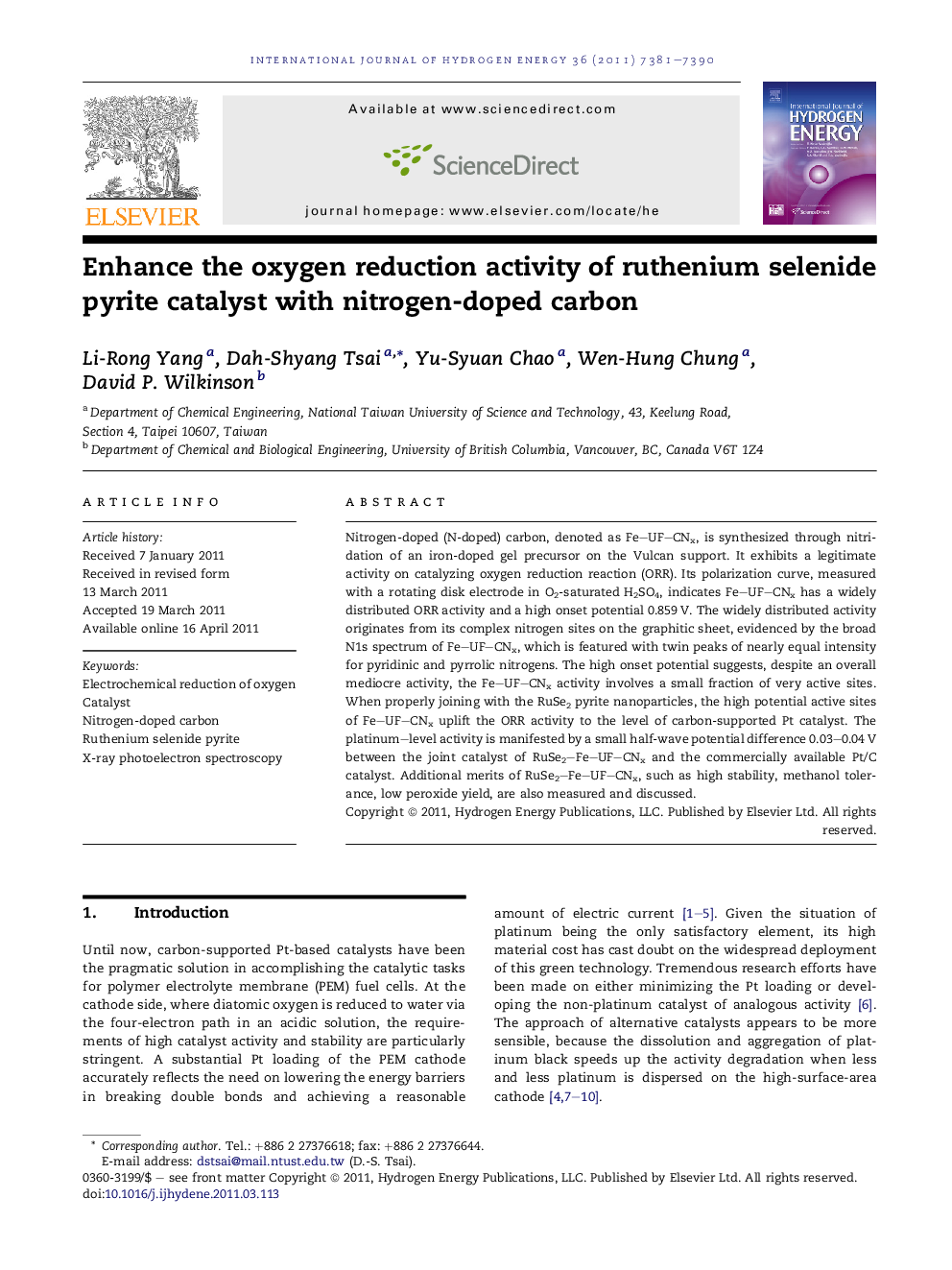| Article ID | Journal | Published Year | Pages | File Type |
|---|---|---|---|---|
| 1279263 | International Journal of Hydrogen Energy | 2011 | 10 Pages |
Nitrogen-doped (N-doped) carbon, denoted as Fe–UF–CNx, is synthesized through nitridation of an iron-doped gel precursor on the Vulcan support. It exhibits a legitimate activity on catalyzing oxygen reduction reaction (ORR). Its polarization curve, measured with a rotating disk electrode in O2-saturated H2SO4, indicates Fe–UF–CNx has a widely distributed ORR activity and a high onset potential 0.859 V. The widely distributed activity originates from its complex nitrogen sites on the graphitic sheet, evidenced by the broad N1s spectrum of Fe–UF–CNx, which is featured with twin peaks of nearly equal intensity for pyridinic and pyrrolic nitrogens. The high onset potential suggests, despite an overall mediocre activity, the Fe–UF–CNx activity involves a small fraction of very active sites. When properly joining with the RuSe2 pyrite nanoparticles, the high potential active sites of Fe–UF–CNx uplift the ORR activity to the level of carbon-supported Pt catalyst. The platinum–level activity is manifested by a small half-wave potential difference 0.03–0.04 V between the joint catalyst of RuSe2–Fe–UF–CNx and the commercially available Pt/C catalyst. Additional merits of RuSe2–Fe–UF–CNx, such as high stability, methanol tolerance, low peroxide yield, are also measured and discussed.
